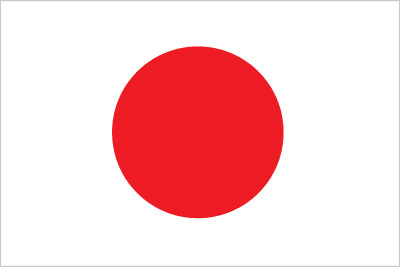
About the characteristics and differences between Japanese rice and jasmine rice
The staple food in Japan is rice. Rice is such a favorite among many Japanese that it can be said that they eat it at least once a day.
Rice is highly versatile and can be used not only for Japanese cuisine but also for Western cuisine such as paella.
Japanese rice has been distributed in Japan for a long time, but due to recent globalization, it has become easier to handle foreign ingredients, so rice from other countries is also being distributed.
One of them is jasmine rice.
Great commentary comparing jasmine rice, which is often seen in Germany, with Japanese rice!
Especially if you live in Germany or Europe, it's the exact opposite of Japan, and you won't find Japanese rice in stores.
On the other hand, there are several types of rice sold in supermarkets, but one of the common rice is jasmine rice.
If you live in Germany, you will often see this rice, but in this article, we will look at the characteristics and differences between Japanese rice and jasmine rice.
Types of Japanese rice
First, there are multiple varieties of Japanese rice.
Among them, we will introduce representative brand rice.

Koshihikari
It is the most cultivated rice in Japan and is a representative brand of rice in Japan.
Sweetness and stickiness are strong, and the fragrance is a very good breed.
It is produced in a wide range of areas, including Niigata Prefecture, and there are differences in taste and stickiness depending on the production area.
The reason for its popularity is that it has a strong umami flavor, so it goes well with any side dish, whether Japanese or Western.

Hitomebore
It is the second most cultivated rice in Japan.
It is produced in the Tohoku and Kanto regions, mainly in Miyagi Prefecture.
It is resistant to cold and can grow well even in cold climates such as the Tohoku region. Compared to Koshihikari, it is slightly larger and stickier, and is said to be delicious even when cold.
Hinohikari
It is the third most cultivated rice in Japan.
It is produced in various regions, mainly in western Japan, including Oita Prefecture.
My father has Koshihikari, and the texture and flavor are similar to Koshihikari, but it seems that it can be purchased cheaper than Koshihikari.
This rice is said to be especially suitable for western food.
Characteristics of Japanese rice
The characteristic of Japanese rice is that it is elastic and becomes sticky when heated.
Rice grains are long and elliptical in shape, and are generally boiled in a rice cooker after being thoroughly polished.
Recently, there is also a type of rice called “rinse-free rice” that can be cooked in a rice cooker without being polished. rice is recommended.
You can adjust the amount of water to maintain the same level of deliciousness whether hardened or soft.
Also, since all varieties of Japanese rice have a sweet taste, you can fully enjoy the taste of the rice alone.
It goes very well with seaweed and salt, so it's often eaten as a light meal.

Dishes that go well with Japanese rice
So far, we have looked at the varieties and characteristics of each Japanese rice.
So what kind of Japanese food does Japanese rice actually go well with?
sushi
Japanese rice and vinegar go well together, so you can add vinegar to Japanese rice to make sushi rice, top it with seafood to make chirashizushi, or add natto or green onion to make sushi rolls.

cooked rice
Meat, vegetables, and seasonings are mixed and cooked in a rice cooker with rice.
Japanese rice is often eaten on its own with other side dishes, but it is also recommended to add flavor to the rice itself.
Characteristics of jasmine rice
Jasmine rice is a type of Thai rice and is the highest quality rice in Thailand.
Because the whiteness of the fir tree resembles jasmine, and because it has a sweet grain-specific aroma when cooked, it is called "Khao Hong Mali" in Thai, meaning "fragrant rice". increase.
The rice grains are more elongated than Japanese rice and do not need to be polished.
The reason for this seems to be that if you grind it like Japanese rice, the fragrance component will be lost.
After lightly rinsing the rice, cook it in a rice cooker.
Jasmine rice has a high water penetration rate and if it is soaked in water for a long time, the rice will be chipped, so when cooking with a rice cooker, it is necessary to turn on the switch immediately without specifying the time.
For cooking, you can choose the quick cooking course.
Also, the amount of rice and water should be the same.

Food that goes well with jasmine rice
As mentioned above, jasmine rice is different from Japanese rice in terms of shape and features.
However, jasmine rice has dishes that take advantage of its characteristics.
Below are some delicious dishes that can be made using jasmine rice.
Khao Man Gai

One of the most popular dishes in Japan is the Thai dish "Khao Man Gai".
By the way, it is called " Hainanese chicken rice " in Chinese, and some people may have seen this name.
It is a dish that is eaten with boiled chicken and rice cooked with boiling water, and is a representative dish of Thailand.
The unique aroma of jasmine rice and its low stickiness go well with the broth, making it a popular dish for many people.
green curry

This is also a popular dish at Japanese curry restaurants and Thai restaurants.
It is a green curry with spices, also known as "Thai curry".
It contains more water than the curry commonly eaten in Japan, and is characterized by its soup-like smoothness.
It also has a strong spiciness because it contains various spices and herbs.
Difference between Japanese rice and jasmine rice
Japanese rice is plump and sweet after it is cooked, so you can eat it by itself without seasoning.
Another characteristic of Japanese rice is that it can be eaten in different shapes like onigiri.
Because of its ease of handling, it is suitable for all genres of cuisine, from Japanese to Western and ethnic dishes.
On the other hand, jasmine rice is generally eaten with other ingredients for flavor, so it is less versatile than Japanese rice.
However, it can be said that it is a rice that goes well with ethnic dishes that make use of its unique flavor.



